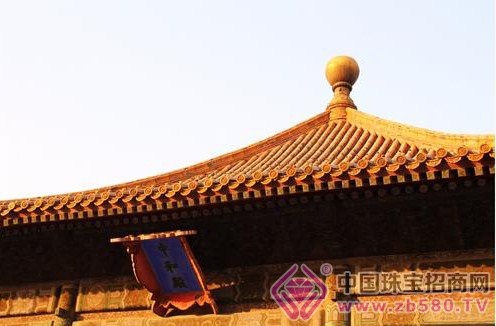Whether the glazed tile of the Forbidden Palace comes from Anhui
Glazed tiles are an important component of ancient Chinese architecture. Legend has it that glaze was in 493 BC, and Fan of the Yue State was the sword of the king of the king. The glass was found from the slag. Because of its colorful colors, it was dedicated to the king with the sword, and the king gave it the name "è ¡". He was rewarded to Fan Wei, who later made it into jewelry and presented it to Xi Shi. When Shih Tzu went to Wu, tears dripped on the "è ¡", and it was a long time. People could see tears flowing in the jewelry, so it was called "rogue" and later became a glass. This is said to be beautiful, but it is clearly worn. The glaze should be accidentally discovered when the ancients smelt bronze. The smelting bronze needs 1080 degrees Celsius, and slag will form in the slag. The ancient craftsmen used the smectite (that is, calcite), added nitrate, copper, iron, mercury, etc., and they got the colored glass. Because of the mixed materials, the expansion coefficient was different, so it was very difficult to use the glass to burn the utensils. One of the twelve, the rest is not broken or split. Glass is also a kind of glass, but due to the different materials used, Chinese glaze does not reach the transparency of glass. According to the "Chinese ancient glass research" records: the ancient Egyptian "Féon" (that is, the ancestor of Western crystal glass) the proportion of silica 92% (not transparent) -99%, China's Zhou Dynasty glass, silica The ratio is only slightly more than 90% (transparent). The difference of 9% is the biggest difference between glass and crystal. The use of glazed tiles made it only when the Northern Wei Dynasty began. Although China had terracotta tiles, it was already glazed in terracotta in the Shang Dynasty, but the glass-making technique was never closed. The Western Wei Dynasty’s Western merchants entered the Central Plains and brought advanced technology. The glazed tile began to become an indispensable thing in the building. Unfortunately, the technique was soon lost, until the famous craftsman He Congjing repeatedly experimented and finally revived the technology. By the time of the Tang Dynasty, the glaze was widely used. In the Tang Dynasty, Wei Yingwu, "The Glass" contained "the same color as the cold ice, and there was no matter the dust." The beauty of the glaze was praised, and the glazed tile became a must for the royal architecture. ", and the Ming and Qing dynasties are more varied in the color of glazed tiles. The production of glazed tiles does not require high-quality raw materials, but the finished products are colorful, so they are heavily relied upon by the royal buildings. To make glazed tiles, generally need two burning, first molding, then glaze and coloring. The temperature control is very strict. When the temperature is too high, the tile panel is porcelainized and the pores are too small. This increases the difficulty of hanging the glaze in the future. The thickness of the glaze is not enough, and the color of the finished product will appear faint, not Solemn, and undulating. Although glazed tile is beautiful, it has two major defects. First, it is heavy, and it can only be laid 30-70%, otherwise it is difficult to bear the weight. Second, the glaze of glazed tile contains lead, which is easy to react with moisture and sulfur dioxide in the air. Long, there will be "powdered rust" and damage. A large number of glazed tiles are used in the Forbidden City, many of which are Ming Dynasty buildings, but the Ming Dynasty tiles are not numbered, and the tiles are numbered. Scholars Kang Yuqiang and Wang Shiwei discovered that according to the "Heavenly Creations", "If the royal palace is used... its soil must be taken from the Taiping House, and the three thousand miles of the boat will reach the capital." Taiping Prefecture is Anhui Dangtu. The "Wan Department Miscellanies" said: "To the Zishan Mountain, in the west of the county 50 miles. The mountain produces Zengzi soil, can burn glaze. This dynasty has a Liulichang, a member of the internal official." This is the indication of Daiwan Xiwuli, Ping County, now belongs to the Mentougou area of ​​Beijing. So, where does the glazed tile of the Forbidden Palace come from? Why do you have raw materials locally, but also from Anhui? Kang Yuqiang, Wang Shiwei and other scholars conducted a small-scale test on the existing Forbidden City glazed tile through the "Hot-Luminous Year" technology, and found that there are Ming Dynasty tiles, but the raw materials come from the local, not Anhui. However, due to the small number of test samples, it is still impossible to say that the glazed tiles of the Forbidden City are made locally. The main material of this paper is quoted from "Beijing Local Records and Forbidden City" Sequin Fabric,Spangle Knitting Fabric,Material Sequin Fabric,Colorfast Sequin Fabric Shaoxing City Shenglin Import And Export Co.,Ltd , https://www.shineogroup.com